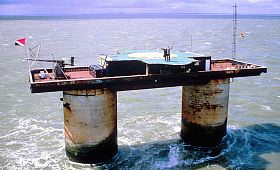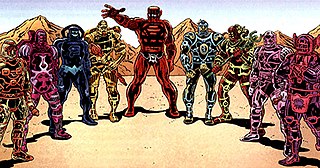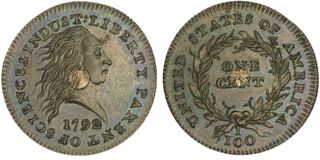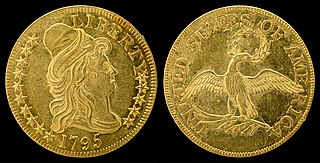
A micronation is a political entity whose representatives claim that they belong to an independent nation or sovereign state, but which lacks legal recognition by any sovereign state. Micronations are classified separately from de facto states and quasi-states; they are also not considered to be autonomous or self-governing as they lack the legal basis in international law for their existence. The activities of micronations are almost always trivial enough to be ignored rather than disputed by the established nations whose territory they claim—referred to in micronationalism as macronations. Several micronations have issued coins, flags, postage stamps, passports, medals and other state-related items, some as a source of revenue. Motivations for the creation of micronations include theoretical experimentation, political protest, artistic expression, personal entertainment and the conduct of criminal activity. The study of micronationalism is known as micropatriology or micropatrology.

The Principality of Sealand is a micronation on HM Fort Roughs, an offshore platform in the North Sea approximately twelve kilometres off the coast of Suffolk, England. Roughs Tower is a Maunsell Sea Fort that was built by the British in international waters during World War II. Since 1967, the decommissioned Roughs Tower has been occupied and claimed as a sovereign state by the family and associates of Paddy Roy Bates. Bates seized Roughs Tower from a group of pirate radio broadcasters in 1967 with the intention of setting up his own station there. Bates and his associates have repelled incursions from vessels from rival pirate radio stations and the U.K.'s royal navy using firearms and petrol bombs. In 1987, the United Kingdom extended its territorial waters to 12 nautical miles, which places the platform in British territory.

The Principality of Hutt River, often referred to by its former name, the Hutt River Province, was an unrecognized micronation in Australia, proclaimed on 21 April 1970 when farmer Leonard Casley declared his farm to be a sovereign state, the "Hutt River Province". He claimed to have seceded from Australia, which occurred during his dispute with the authorities concerning wheat production quotas. A few years later, Casley began styling himself as "Prince Leonard" and granting family members royal titles, although he did not include the word "principality" in the official name until 2006. In 2017, Casley's claim to rulership was taken over by his son Graeme, who dropped the claim to sovereignty on 3 August 2020.

A commemorative coin is a coin issued to commemorate some particular event or issue with a distinct design with reference to the occasion on which they were issued. Many coins of this category serve as collector's items only, although some countries also issue commemorative coins for regular circulation.
The Grand Duchy of Avram is a micronation founded in the early 1980s by Tasmanian John Charlton Rudge, who styles himself the "Grand Duke of Avram".

The ducat coin was used as a trade coin in Europe from the later Middle Ages to the 19th century. Its most familiar version, the gold ducat or sequin containing around 3.5 grams of 98.6% fine gold, originated in Venice in 1284 and gained wide international acceptance over the centuries. Similarly named silver ducatons also existed. The gold ducat circulated along with the Florentine florin and preceded both the modern British pound sterling and the United States dollar.

The Celestials are fictional characters appearing in American comic books published by Marvel Comics. Depicted as cosmic beings, they debuted in the Bronze Age of Comic Books and have reappeared on numerous occasions.

The Empire of Atlantium is a micronation and secular, pluralist progressive lobby group based in New South Wales, Australia.

Free silver was a major economic policy issue in the United States in the late 19th century. Its advocates were in favor of an expansionary monetary policy featuring the unlimited coinage of silver into money on-demand, as opposed to strict adherence to the more carefully fixed money supply implicit in the gold standard. Free silver became increasingly associated with populism, unions, and the perceived struggle of ordinary Americans against the bankers, monopolists, and robber barons of the Gilded Age. Hence, it became known as the "People's Money".

Extraterrestrial real estate refers to claims of land ownership on other planets, natural satellites, or parts of space by certain organizations or individuals. Previous claims are not recognized by any authority, and have no legal standing. Nevertheless, some private individuals and organizations have claimed ownership of celestial bodies, such as the Moon, and are actively involved in "selling" parts of them through certificates of ownership termed "Lunar deeds", "Martian deeds" or similar.

The ruble or rouble is the currency unit of Belarus and Russia. Historically, it was the name of the currency of the Russian Empire and, later, of the Soviet Union.
Celestia is a free astronomy computer program.

The Principality of Sealand, a self-proclaimed micronation founded on a former World War II fort in the North Sea, has issued a number of coins and stamps for collectors. These coins and stamps are denominated in "Sealand dollars" (SX$). Sealand coins can be considered souvenirs only or "rounds" since they do not circulate anywhere and are not accepted as currency by any nation.

The Silver center cent is an American pattern coin produced by the United States Mint in 1792. As a precursor to the large cent it was one of the first coins of the United States and an early example of a bimetallic coin. Only 12 original examples are known to exist, of which one is located in the National Numismatic Collection at the Smithsonian Institution. Two more specimens exist but contain fabricated plugs added after minting.

Molossia, officially the Republic of Molossia, is a micronation claiming sovereignty over 11.3 acres of land near Dayton, Nevada. The micronation has not received recognition from any of the member states of the United Nations. It was founded by Kevin Baugh. He continues to pay property taxes on the land to Storey County, the recognized local government, although he calls it "foreign aid". He has stated "We all want to think we have our own country, but you know the United States is a lot bigger".

The three-dollar piece was a gold coin produced by the United States Bureau of the Mint from 1854 to 1889. Authorized by the Act of February 21, 1853, the coin was designed by Mint Chief Engraver James B. Longacre. The obverse bears a representation of Lady Liberty wearing a headdress of a Native American princess and the reverse a wreath of corn, wheat, cotton, and tobacco.

The half eagle is a United States coin that was produced for circulation from 1795 to 1929 and in commemorative and bullion coins since 1983. Composed almost entirely of gold, its face value of five dollars is half that of the eagle coin. Production of the half eagle was authorized by the Coinage Act of 1792, and it was the first gold coin minted by the United States.

The gold dollar or gold one-dollar piece is a gold coin that was struck as a regular issue by the United States Bureau of the Mint from 1849 to 1889. The coin had three types over its lifetime, all designed by Mint Chief Engraver James B. Longacre. The Type 1 issue has the smallest diameter of any United States coin minted to date.
James T. Mangan (1896–1970) was an eccentric, public relations man and writer on self-help topics who publicly claimed ownership of outer space in 1948.

Westarctica, officially the Grand Duchy of Westarctica and formerly the Protectorate of Westarctica, is a micronation in Antarctica, founded in 2001 by Travis McHenry, who styles himself as Grand Duke Travis. It claims a region of West Antarctica that has not been claimed by any nation state, comprising most of Marie Byrd Land. This wedge is located between the Ross Dependency claimed by New Zealand, and the Chilean Antarctic Territory, between 90 degrees and 150 degrees west longitude and south of the 60th parallel. The region includes 1,600,000 square kilometres (620,000 sq mi) of land, making it the largest territory not claimed by any recognized nation. Westarctica claims over 2,000 citizens, but none of them reside within the claimed territory, which has no permanent settlements or research stations.


















